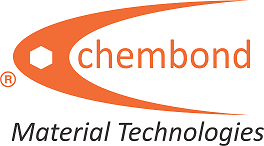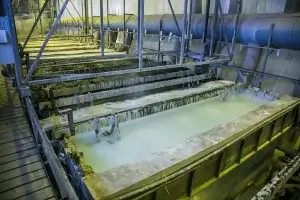
Topic
Introduction
For those who are passionate about woodworking, painting, or any other crafting activities, the importance of a clean, dust-free surface cannot be overstated. One such tool that can help you achieve this ideal condition is a tack cloth. In particular, the Gramos Tack Cloth, manufactured by Chembond Material Technologies, has become a trusted name in the industry. By the end of this guide, you’ll have comprehensive knowledge about this essential tool and its proper use.
What is a Tack Cloth?
Tack cloth, also known as a tack rag, is a specialized material designed to remove dust and debris from surfaces before applying paint, stain, or finish.
This dust-absorbing cloth is often made from gauzy fabric, such as cheesecloth, and is impregnated with a sticky substance. The cloth’s slightly adhesive texture attracts and traps dust particles, ensuring a clean, smooth surface for optimal adhesion and a flawless finish.
The Making of a Tack Cloth
The base for most tack cloths is cheesecloth or a similar gauze-like fabric. This stable cotton or polyester material does not produce lint as a conventional rag might, so it won’t leave debris on your project.
The cloth is then coated in a variety of substances to give it tackiness. Some brands, use beeswax, while others apply a type of resin.
When to Use a Tack Cloth?
A tack cloth should be utilized immediately before you apply paint, stain, or other finishes to any project. Even if the item to be painted isn’t wood, it can still harbor dust and debris on the surface that can mar the final finish.
After using a tack cloth, your surface is cleaner and less likely to produce unsightly bumps. It also allows your finish to bond properly with the surface, so it doesn’t scratch off easily.
Understanding the Limitations of Tack Cloth
While tack cloths are undeniably useful, they are not without their limitations. Traditional tack cloths, for instance, can leave a thin layer of residue if you wipe surfaces too firmly. This residue might interfere with the adhesion of your paint or finish.
Also, tack cloths are not suitable for every surface. They work best on relatively clean surfaces where they can focus on lifting the finest dust particles.
How to Use a Tack Cloth
Using a tack cloth is a straightforward process, but a few tips can help you get a better finish. First, finish all your sanding before you use the tack cloth. Then, remove large particles first using a light, non-abrasive brush, vacuum, or dry rag. Now, you’re ready to use your tack cloth.
Separate the cloth into pieces if you prefer and lightly drag the cloth across the surface. Use steady, light pressure, and cover the entire area that will be painted or stained.
Tack Cloth Alternatives
While traditional tack cloths are effective, they aren’t the only option for removing dust before painting or finishing.
Some common alternatives include microfiber cloths, compressed air, and vacuums. You can also make homemade tack cloths by treating fabric with beeswax, varnish, or spray adhesive.
Tack Cloth vs Microfiber
Microfiber cloths are another popular choice for dust removal. Unlike traditional tack cloths, microfiber cloths don’t leave a sticky residue behind.
They’re made of synthetic fibers that are excellent at picking up dust and dirt. Plus, they’re more environmentally friendly since they can be washed and reused multiple times.
Tools of the Trade: Gramos Tack Cloth
When it comes to tack cloths, the Gramos brand by Chembond Material Technologies Private Limited stands out for its superior quality and efficiency.
The Gramos Tack Cloth is an essential tool for achieving a flawless paint finish. Its high dust absorbency and impressive strength and wear resistance make it both efficient and durable.
It’s proven that using tack cloths like the Gramos Tack Cloth is the most reliable and cost-effective method for creating a pristine, ready-for-painting surface.
Frequently Asked Questions
Tack cloths can leave a thin layer of residue if you wipe surfaces too firmly. The key is to gently wipe the surface, whether it’s raw wood or bare metal. If there is still a sticky residue, clean it up with mineral spirits or diluted alcohol.
Tack cloth can usually be used several times (depending on the size of the project). But once the tack cloth is clogged with dirt and dust, there is no way to really reuse it. Most people dispose of it and start using a different tack cloth.
Conclusion
In conclusion, tack cloths like the Gramos Tack Cloth are an essential tool for anyone seeking a flawless finish on their projects.
They’re easy to use, effective, and a small investment can go a long way to ensuring the success of your next craft or DIY project. Remember, a clean, dust-free surface is the best canvas for your creativity.
Go ahead and explore the power of the Gramos Tack Cloth for your next project.



